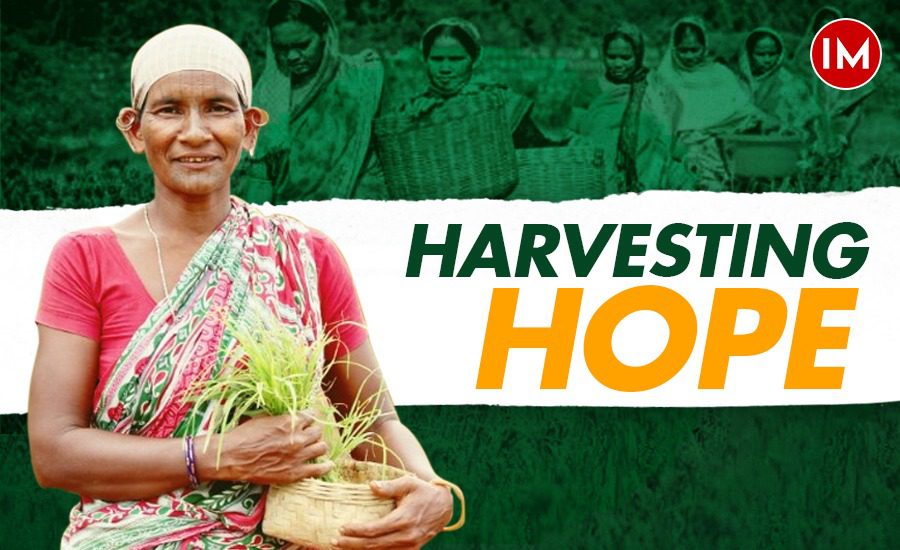Odisha has undergone a remarkable transformation in its agricultural landscape, evolving from a food deficit state to a surplus one during the past two decades. The Odisha Government has spearheaded initiatives that leverage technology, community-driven approaches, and sustainable practices to enhance agricultural productivity and ensure food security for all.
Indian Masterminds exclusively spoke with IAS officer Anu Garg, currently posted as Development Commissioner Cum Additional Chief Secretary, Water Resources of Odisha to know more about the project.

THE ICT TOOLS
The key to Odisha’s agricultural success lies in embracing technological advancements to boost productivity. Information and communication technologies (ICTs) have been instrumental in facilitating better farm management, weather forecasting, and market access. This strategic use of technology has led to a 2.5-fold increase in food grain production, reaching 136.07 lakh MT in 2022-23 from 55.35 lakh MT in 2000-01.
Moreover, the adoption of scientific crop management practices, both conventional and digital, has not only increased non-paddy crop cultivation but also reduced the area under paddy cultivation. Schemes like “BALARAM” have improved access to timely formal credit for farming operations, benefiting Lessee Cultivators and sharecroppers.

ODISHA MILLET MISSION
The project includes the Odisha Millet Mission (OMM), which focuses on crop diversification and climate-proofing agriculture. OMM has established a robust agri-value chain system, promoting a fork-to-farm approach and reducing dependence on inputs.
“This mission has not only contributed to sustainable food systems but also supported biodiversity,” shared the officer.

ENSURING FOOD SECURITY AND CLIMATE RESILIENCE
The state government’s commitment to “Leave No One Behind” is evident in its efforts to extend food security through increased productivity, protection of smallholders’ interests, and the promotion of climate-resilient crops and practices.
The Odisha Climate Change Action Plan 2021-30 prioritizes efficient micro and drip irrigation, stress-tolerant crop varieties, and organic farming to build climate resilience in agriculture.

COMMUNITY-INVOLVEMENT
An integral aspect of the government’s approach is the active involvement of local communities in decision-making processes. Pani Panchayats (Water Users Associations), Self-Help Groups (SHGs), Farmer Producer Organizations (FPOs), and cooperatives play a crucial role in empowering farmers.
“Women, especially, are actively participating in the millet value chain, engaging in processing, value addition, and marketing under the Odisha Millet Mission.”
Mission Shakti, part of the Special Programme on Agriculture Production Clusters, aims to double the farm income of women farmers in tribal-dominated districts. Participatory approaches are employed to involve local communities in managing natural resources such as water and forests.
SUSTAINABLE AGRICULTURE
The community-driven approach in Odisha has led to a more inclusive and sustainable agricultural sector. Farmers benefit from increased access to credit and financial services through SHGs, improved farm power availability through government assistance in mechanization, and a substantial increase in both production and productivity of various crops.

THE KALIA SCHEME
The Krushak Assistance for Livelihood and Income Augmentation (KALIA) scheme reflects the state government’s commitment to addressing rural distress and enhancing the socio-economic conditions of farmers. It provides financial assistance for crop cultivation, livelihood diversification, and support to vulnerable households.
The scheme encompasses interest-free crop loans, financial assistance for inputs, and support for various agricultural allied activities, benefitting small and marginal farmers, sharecroppers, and landless agricultural households.

WATER SECURITY
Odisha has undertaken transformative steps to boost water security, with a focus on completing long-pending irrigation projects, implementing instream storage structures, adopting underground pipeline systems, and incentivizing canal lining for water use efficiency. Community participation has been achieved through over 35,000 Pani Panchayats (WUAs).
The initiatives in Odisha have not only elevated the state’s agricultural prowess but have also set a precedent for inclusive and sustainable agricultural development. Through a combination of technological innovation, community empowerment, and strategic interventions, Odisha is paving the way for a resilient and prosperous agricultural future.

































